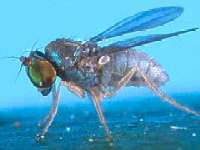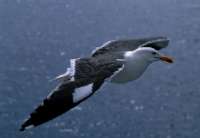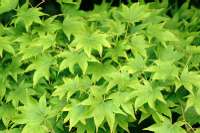|
|
 |
|
|
|
 |
| |
|
|
 |
Weather
Basics |
Short range forecasting by plants and animals
Can animals and plants help predict the weather or other natural events? There’s tradition of folklore that says they do – and in some cases, scientists agree.
Dogs and cats are notorious for knowing when a tornado or earthquake are imminent. Birds roost early and feed heavily before a rain or snow and pigs and squirrels gather more debris to insulate themselves from cold weather.
|
|
|
|
|
 |
Plants and certain fungi such as Rainstars can accurately forecast the certainty of wet and dry weather. Chickweed, dandelions, bindweeds, wild indigo, clovers, and tulips all fold their petals prior to the rain. Rainstars, a type of fungus, opens up prior to a rain and closes in dry weather. Mushrooms abound when the weather is moist as well as do mosses and seaweeds. In fact, seaweeds exposed on the rocks at low tide seem to swell and rejuvenate in the high humidity proceeding wet weather.
|
 |
 |
 |
|
1. Dandelion flowers
source: http://www.flowersandfauna.com/dandelionphotos.htm
|
|
|
Let’s take a look at some very-very old lore in connection with plants and animals, whith short explanations why some of them actually do work.
|
|
|
 |
Cat - "If cats lick themselves, fair weather."
During fair weather, when the relative humidity is low, electrostatic charges (static electricity) can build up on a cat as it touches other objects. Cat hair loses electrons easily, so cats become positively charged.
When a cat licks itself, the moisture makes its fur more conductive so the charge can “leak” off the cat. In fair weather during high pressure, dry air sinks from above. Relative humidity is low and cat hair becomes a better insulator. Many cats don’t like to be petted during cold winter weather when the humidity is low because sufficient charge builds up to cause small sparks which irritate them (and the petter.)
2. source: http://www.thepetprofessor.com/
|
Crickets - Crickets are accurate thermometers; they chirp faster when warm and slower when cold.
They are extremely accurate. Count their chirps faster for fourteen seconds, then add forty,and you have the temperature (in Fahrenheit) of wherever the cricket is.
|
 |
 |
 |
|
3. Cricket
source: http://hortipm.tamu.edu/pestprofiles/other/cricket/cricket.html
|
|
 |
 |
|
4. source: http://free-stock-photos.com/
|
|
 |
Flies – Flies bite more before a rain.
This rule does not always apply, but insects do calling more during moist weather, as flying is more difficult. Heat causes human sweating, which makes you a more appetizing target. Theses two reasons, plus a release of more body odors when atmospheric pressure on your body lowers, will add up to the rule that flies and insects are more bothersome just before a rain than at any other time.
|
Cow - A cow with its tail to the west, makes weather the best; A cow with its tail to the east, makes weather the least.
This New England saying has much truth in it, for an animal grazes with its tail to the wind. This is a natural instinct, so the animal may face and see an invader; and invader from the opposite side would carry out its scent to the cow, in the wind. In as much as an east wind is a rain wind and a west wind is a fair wind, the grazing animal's tail becomes a weather sign.
5. source: http://www.thepetprofessor.com/
|
 |
|
 |
 |
|
6. source: http://www.edenpics.com/
|
|
 |
Sea gull - "Sea gull, sea gull, sit on the sand; It's a sign of a rain when you are at hand."
Generally speaking, birds will roost more during low pressure than during high-pressure. Before a hurricane great flock of birds will be seen roosting. Perhaps the lowering of pressure or thinning of air density makes flying so much harder; the lessening of natural updrafts would also account for the birds "resting it out."
|
Leaves - When leaves show their backs, it will rain.
When trees grow, their leaves fall into a pattern according to the prevailing wind. Therefore, when a storm wind (which is naturally a non-prevailing one) occurs, the leaves will be ruffled backwards and show their light undersides.
|
 |
 |
 |
|
7. source: http://www.freefoto.com/index.jsp
|
|
|
|
 |
Pimpernel - "Pimpernel, pimpernel, tell me true / Whether the weather be fine or no / No heart can think, no tongue can tell / The virtues of the pimpernel."
When the atmosphere reaches about 80% humidity, the bog pimpernel closes. So in other words, the scarlet pimpernel open when it's sunny, and close when rain is due.
8. Scarlet pimpernel
source: Cornell University, Department of Plant Pathology, Itacha, NY 14863
http://vegetablemdonline.ppath.cornell.edu/
|
Compiled by Vera Schlanger - Hungarian Meteorological Service
Scientific reviewing: Dr. Ildikó Dobi Wantuch / Dr. Elena Kalmár - Hungarian Meteorological Service, Budapest
Last updated 2003-12-12
More about weather proverbs from:
http://www.wxdude.com/proverb.html
http://www.stalkingthewild.com/weather.htm
http://www.meds-sdmm.dfo-mpo.gc.ca/cmos/weatherlore.html
http://vathena.arc.nasa.gov/curric/weather/hsweathr/solutions.html
http://www.shoal.net.au/~seabreeze/weather.html
http://members.aol.com/Accustiver/wxworld_folk.html
http://www.windandweather.com/folklore/folklore8.html
http://www.pulseplanet.com/archive/Nov99/2007.html
|
|
 |
|









